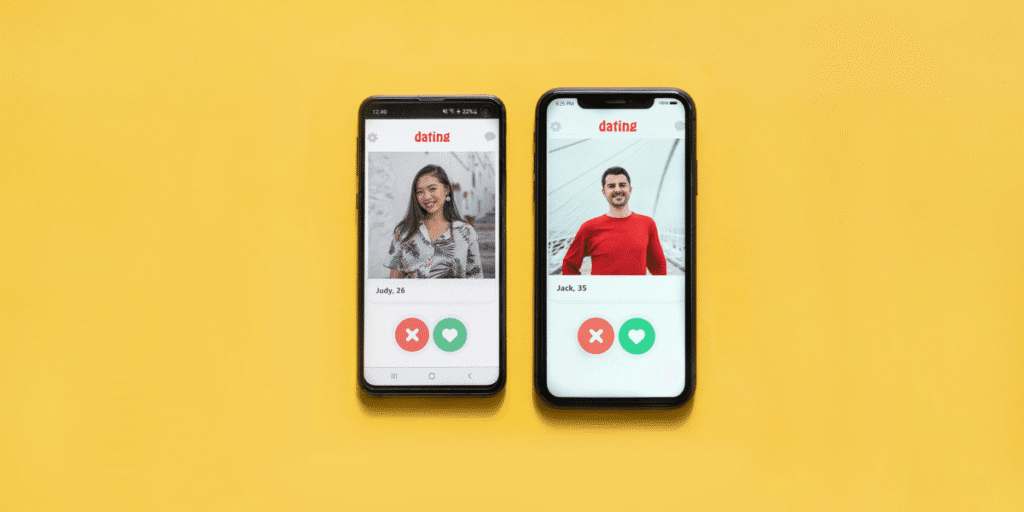As Valentine’s Day 2025 arrives, it’s clear that the way people approach dating and relationships has undergone a profound transformation, with technology continuing to play a central role. The digital age has reshaped how people meet, connect, and build romantic relationships, with online dating apps and platforms leading the charge. What was once a niche activity has now become a mainstream way to find love, companionship, and everything in between. In this evolving landscape, dating apps are becoming more inclusive, data-driven, and user-centric, offering deeper insights into behavior and preferences that help match users with more precision and compatibility.
Online dating platforms like Tinder, Bumble, and Hinge, which have long been household names, have continued to evolve in response to user feedback and changing societal attitudes toward relationships. No longer simply about swiping left or right, these platforms now offer a variety of features designed to foster meaningful connections. The focus has shifted from superficial interactions to creating spaces where users can engage more authentically with potential matches.
Tinder, one of the pioneers of swipe-based dating, has embraced data-driven matchmaking to enhance the quality of connections. The platform now uses advanced algorithms and machine learning to analyze user behavior—such as response times, messaging styles, and the types of profiles users engage with most—offering recommendations that reflect a person’s interests and preferences more accurately. For example, the app’s “Tinder Explore” feature, launched in 2024, has allowed users to engage in shared interests, be it music, food, or travel, bringing more context into the search for a match.
Bumble has also adapted to the changing landscape by empowering users to take control of their dating experience. With its signature feature allowing only women to initiate conversations in heterosexual matches, Bumble has pioneered a more inclusive approach to online dating. As of 2025, the app has incorporated new features designed to help users express themselves more fully, such as in-depth profile prompts that go beyond surface-level introductions. Additionally, Bumble has been at the forefront of promoting relationship diversity, supporting users who identify as LGBTQ+ and ensuring that every community feels welcomed.
Meanwhile, Hinge, known for its “Designed to be Deleted” slogan, has refined its approach to foster deeper connections. By focusing on meaningful conversations and encouraging users to respond to profile prompts rather than just relying on photos, Hinge has cultivated a more thoughtful and intentional dating culture. The app’s emphasis on long-term compatibility and personalized preferences has helped users build relationships that go beyond initial attraction, contributing to the shift from casual encounters to more serious commitments.
A growing trend in online dating is the rise of virtual dating and digital romance, which has become especially popular during the pandemic and continues to thrive in 2025. Virtual dating offers a unique opportunity for couples to build connections before meeting in person, or even in cases where physical meetings are difficult. Video chats, virtual dinner dates, and gaming platforms have allowed people to maintain intimacy and excitement, even from a distance. Apps like “The League” and “Raya” have capitalized on this trend by offering exclusive, members-only spaces where virtual dating is encouraged, allowing users to get to know each other beyond physical attraction.
Digital romance extends beyond just dating apps. Virtual reality (VR) dating is making waves, with platforms like “vTime XR” enabling users to engage in fully immersive environments where they can meet, interact, and even go on virtual dates. This new wave of dating represents a fusion of technology and romance that breaks down geographical barriers, creating new ways for individuals to connect on a deeper level, regardless of location.
While online dating has undeniably grown more sophisticated, it’s not without its challenges. The overwhelming number of options and the pressure to constantly present one’s best self online can contribute to a sense of choice overload or anxiety. As a result, mental health and emotional well-being have become focal points in the industry. Many apps, including Bumble and Hinge, now offer in-app resources for mental health support, and features like “time off” settings, where users can take breaks from swiping, have gained traction to promote healthier usage.
In 2025, online dating and relationships are no longer a novelty but a central part of the romantic landscape. As technology continues to improve and the digital dating world becomes more nuanced, the future of online romance looks to be more personalized, inclusive, and user-focused. Valentine’s Day may still symbolize traditional notions of love and connection, but in the digital age, love is increasingly being defined by algorithms, virtual experiences, and the ability to connect from anywhere in the world. The rise of remote interactions and evolving online dating platforms marks a new chapter in the way we experience and navigate relationships, offering unprecedented opportunities for connection in an increasingly virtual world.


